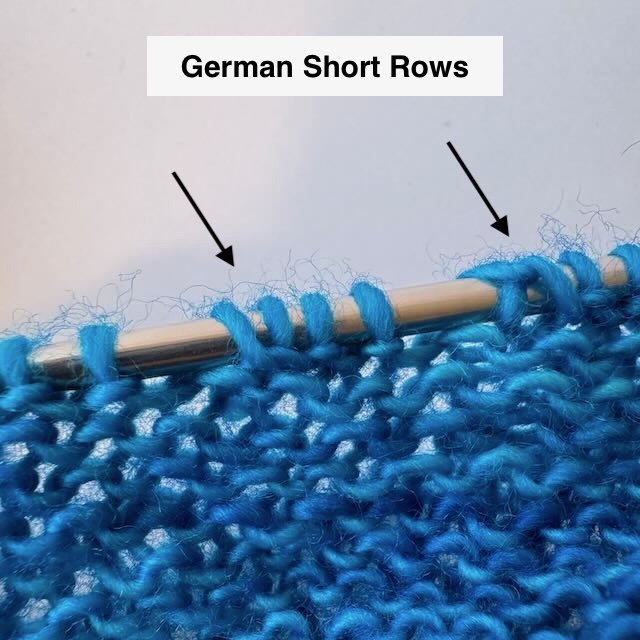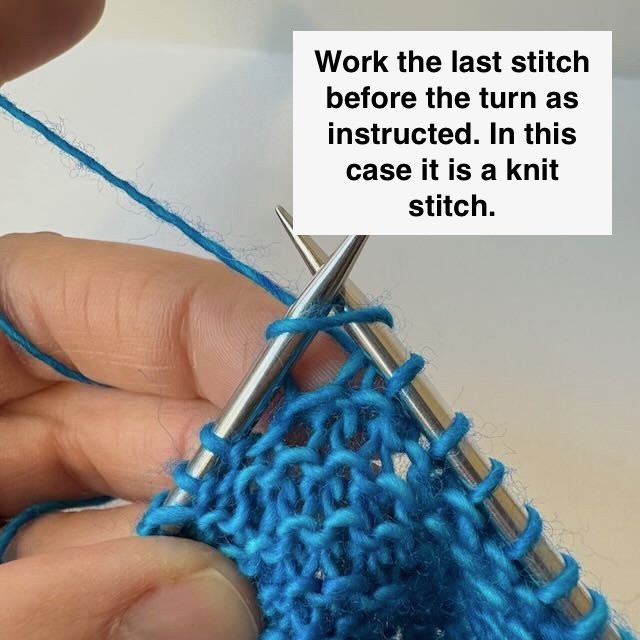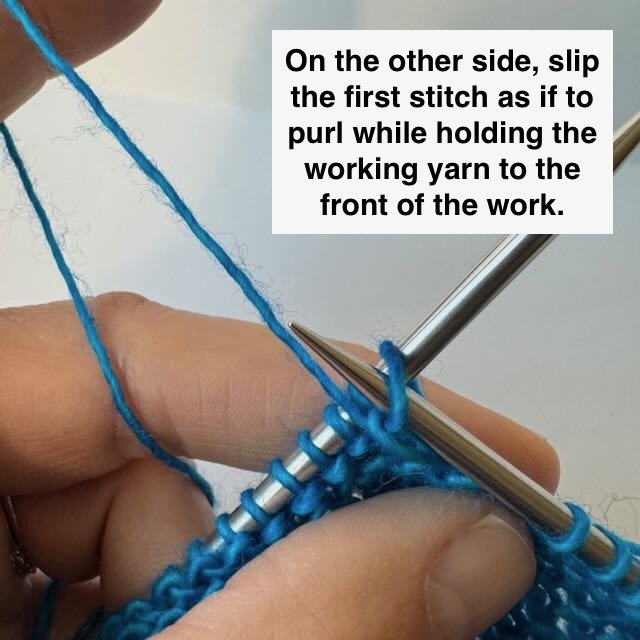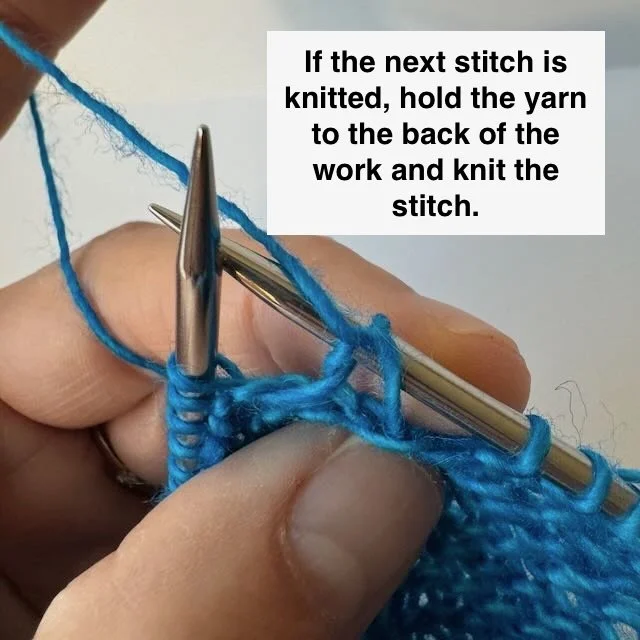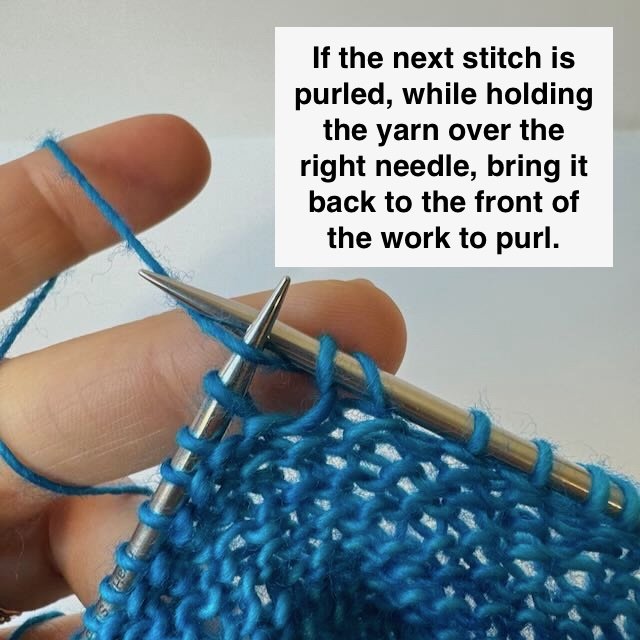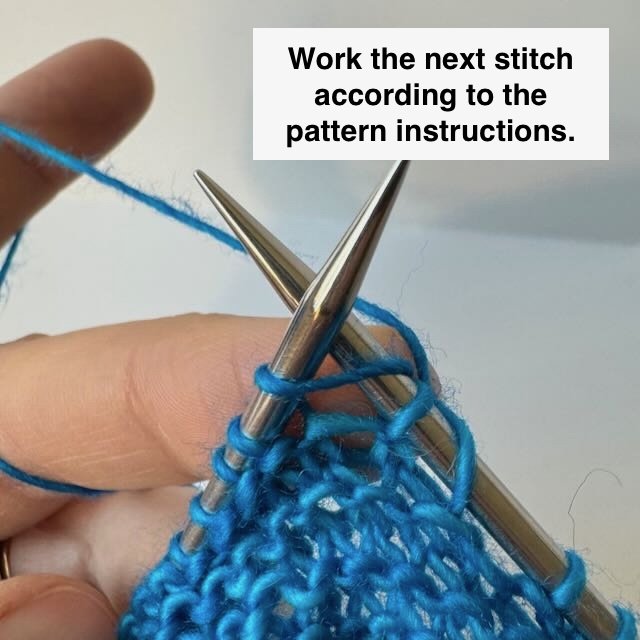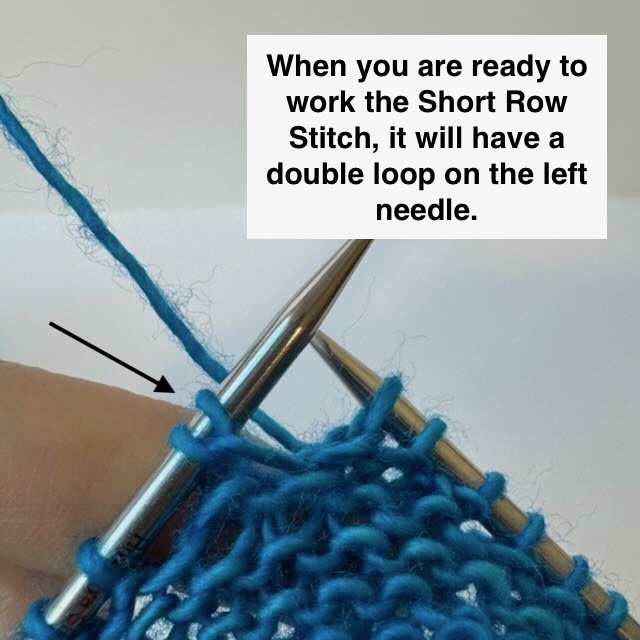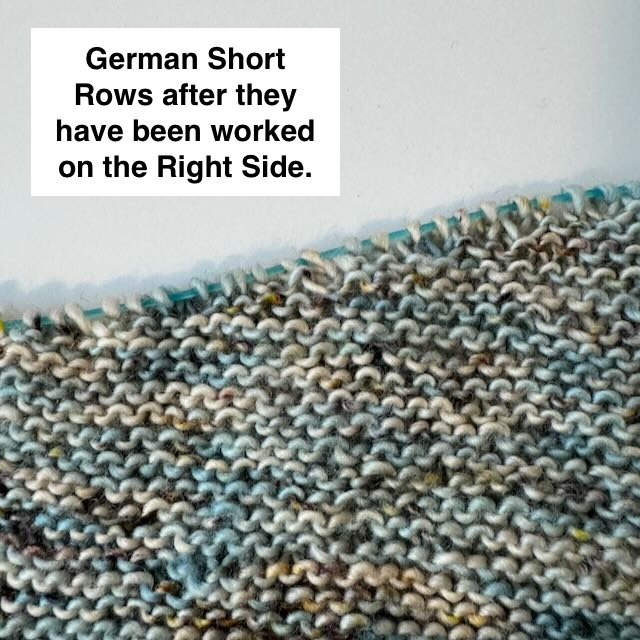German Short Rows
I would like to share my newest favorite short row method: the German Short Row! I am currently working on a new shawl pattern that will use this type of short row.
Short rows are used to add length to the vertical direction of a knitted object. Rows are only partially worked, leaving the remaining stitches in that row to rest. This results in less rows worked on one edge of the fabric, creating a shorter piece of fabric. In the schematic below, short rows are worked in every even row, making the right side of the fabric longer than the left.
There are many methods for creating short rows (Simple Short Rows, Wrap and Turn, Yarnover Short Row, Shadow Wrap or Twin Stitch - to name a few). The goal of these methods is to make the transition between the short row and the full row to follow as smooth as possible. Each method has advantages and disadvantages.
Compared to the most common type of short row, the wrap and turn, German short rows involve knitting to the desired turning point, then turning the work and slipping the next stitch purlwise with the yarn in front. This creates a double stitch on the needle. When it comes time to work back across the short row, the double stitch is treated as one stitch, creating a smooth and invisible transition in the fabric.
Wrap and turn short rows involve knitting to the turning point, then turning the work and slipping the next stitch purlwise, bringing the yarn to the front and wrapping it around the slipped stitch before turning the work again. When working back across the short row, the wrapped stitch is picked up and knit together with the next stitch to prevent a gap in the fabric.
The main difference between the two techniques is in the way they handle the turning point of the short row. German short rows create a double stitch at the turning point, while wrap and turn short rows wrap the stitch to prevent a gap. German short rows are often preferred for their seamless and invisible look, while wrap and turn short rows can be more noticeable in the fabric but offer more control over shaping. Ultimately, the choice between the two techniques depends on personal preference and the desired outcome for the project.
The German Short Row is a good method for garter stitch patterns, as it blends will into the knitted pattern. I used this method for my Super Girl Shawl pattern, which I am very happy with!
Below you can see how seamless this method of short row is. The bottom edge of the Super Girl shawl shows no signs of gaps or funky stitches, which usually are a problem with other short row mehtosds.
By using German Short Rows, you can create a smooth and seamless transition between the short rows and the rest of your knitting project. Experiment with this method in different patterns to see how it can enhance your knitting skills!


